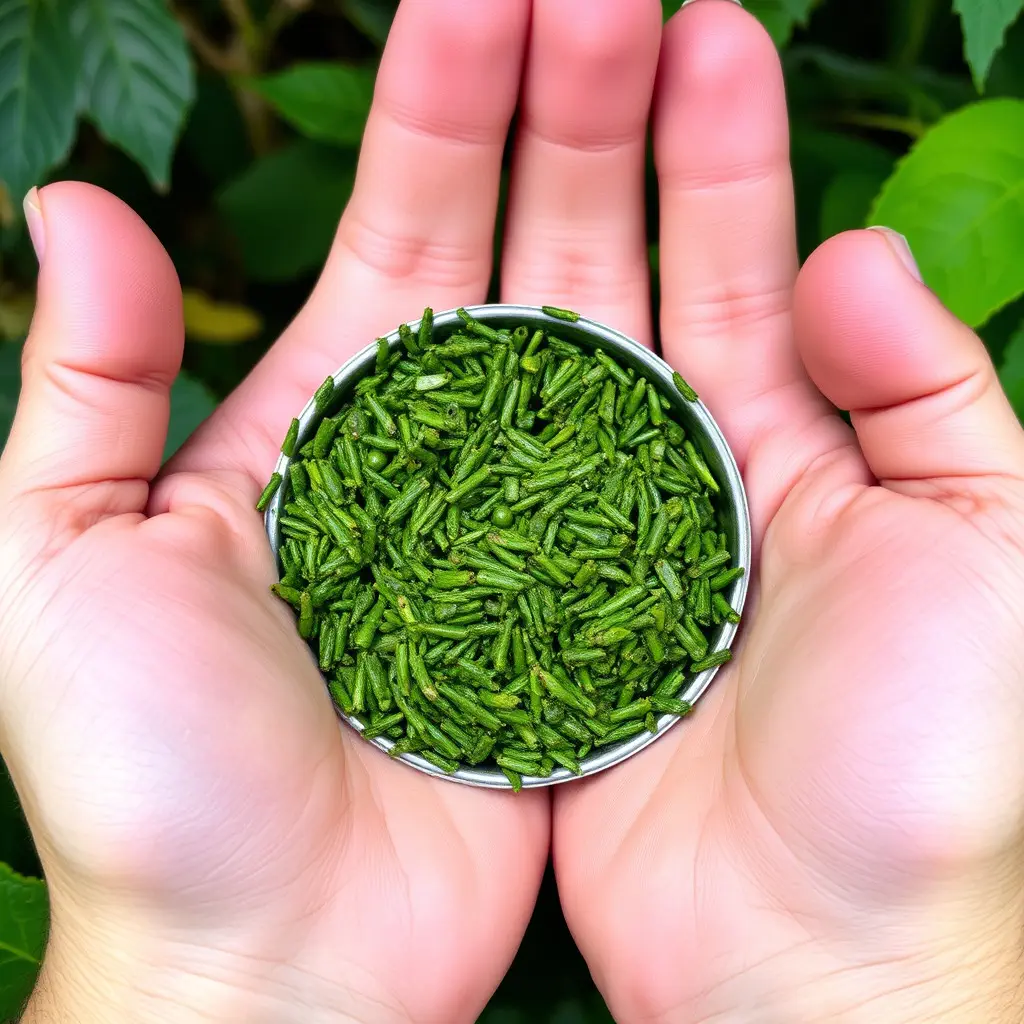Kratom, derived from Southeast Asian trees, has gained attention as a natural alternative for managing chronic pain due to its alkaloids, mitragynine and 7-hydroxymitragynine, which can engage with opioid receptors. These compounds offer potential analgesic effects without the euphoria associated with traditional opioids. Kratom's therapeutic benefits include managing conditions like arthritis, fibromyalgia, and neuropathy by modulating pain signals and stimulating endorphin production. However, its use must be approached with caution due to its dual stimulant and sedative properties, which can affect daily activities if misused. The legal status of kratom is variable worldwide, emphasizing the need for further research to confirm its safety, efficacy, and optimal usage in pain management. Safe and informed dosing, considering individual factors like body composition and health status, is essential, with new users starting at low doses and adjusting as needed while choosing from different strains that offer varying effects. Kratom should be integrated into a comprehensive pain management strategy under professional guidance to avoid tolerance and ensure side effects are managed appropriately. Regular monitoring by healthcare professionals is vital for those incorporating kratom into their holistic health regimen for chronic pain management.
Exploring the potential of kratom as a natural alternative for managing chronic pain, this article delves into its efficacy, mechanisms, and considerations for safe usage. Known for its pain-relieving properties, kratom may offer a viable complement or substitute to prescription painkillers, warranting closer examination in the realm of chronic pain management. We will examine the nuances of kratom dosage, explore various strains, and discuss how it can be safely integrated into a holistic approach to alleviate persistent discomfort. Join us as we navigate the complexities and benefits of kratom for those seeking relief from chronic pain.
- Kratom's Role in Mitigating Chronic Pain: An Overview of Its Mechanisms and Effects
- Understanding Kratom: Dosage, Strains, and Safety Considerations for Pain Relief
- Balancing Act: Integrating Kratom into a Holistic Chronic Pain Management Plan
Kratom's Role in Mitigating Chronic Pain: An Overview of Its Mechanisms and Effects

Kratom, a plant native to Southeast Asia, has garnered attention in the realm of natural remedies for chronic pain management. The leaves of kratom contain compounds known as alkaloids, primarily mitragynine and 7-hydroxymitragynine, which are thought to interact with opioid receptors in the brain and spinal cord, potentially offering pain-relieving effects. These interactions can help alleviate chronic pain by modulating the body’s pain signals and enhancing the production of endorphins, which are the body’s natural painkillers. The efficacy of kratom in managing chronic pain is multifaceted; it may provide both immediate analgesic effects as well as long-term pain reduction for individuals suffering from conditions like arthritis, fibromyalgia, and neuropathy.
While the use of kratom for pain management has been a topic of ongoing research and debate, its potential role in reducing dependence on prescription painkillers is significant. Users often report that kratom helps them manage their chronic pain with fewer side effects compared to traditional pharmaceuticals. However, it’s important to approach the use of kratom with caution, as it can also have stimulant-like effects at lower doses and sedative effects at higher doses, which can impact one’s daily functioning if used improperly. The regulatory status of kratom varies by country and region, underscoring the need for continued research into its safety, efficacy, and appropriate dosing to optimize its role in chronic pain management.
Understanding Kratom: Dosage, Strains, and Safety Considerations for Pain Relief

Kratom, a tropical evergreen tree native to Southeast Asia, has garnered attention in the realm of natural pain relief due to its potential to reduce reliance on prescription painkillers. The leaves of kratom contain alkaloids, primarily mitragynine and 7-hydroxymitragynine, which are believed to interact with opioid receptors in the brain, thereby offering analgesic effects. When considering kratom for chronic pain management, understanding dosage and strain variety is crucial.
Dosage is a critical factor as it can significantly influence the efficacy and safety of kratom for pain relief. Recommended dosages can vary depending on the individual’s body composition, tolerance, and specific health conditions. A common guideline suggests starting with a low dose to gauge individual responses before gradually increasing if necessary. For chronic pain management, users often take repeated doses throughout the day, with some finding relief in as little as 10 grams for new users or up to 25 grams for those with higher tolerance levels. However, it is essential to approach kratom with caution and to consult healthcare professionals before incorporating it into one’s pain management regimen.
As for strains, kratom comes in various vein colors—red, white, and green—each offering distinct effects that can impact pain relief experiences. Red vein strains are typically associated with sedative and analgesic properties, making them popular among those seeking pain relief. White vein strains tend to provide more invigorating and uplifting effects, which may be beneficial for managing chronic pain without causing drowsiness. Green vein strains offer a balance of both, catering to users who desire a mix of stimulation and relaxation. Safety considerations are paramount when using kratom; potential side effects include nausea, constipation, and dependency, which underscores the importance of responsible use and adherence to safe dosing guidelines. Users should also be aware of the legal status of kratom in their jurisdiction, as it varies across different regions and is subject to regulation due to its potent effects.
Balancing Act: Integrating Kratom into a Holistic Chronic Pain Management Plan

Kratom, a plant native to Southeast Asia, has garnered attention in the realm of alternative pain management strategies, particularly for individuals grappling with chronic pain. Its leaves contain compounds that may provide relief from persistent discomfort. When considering the integration of kratom into a holistic approach for managing chronic pain, it’s crucial to understand its potential effects and how it can complement other therapies. Kratom’s active ingredients, mitragynine and 7-hydroxymitragynine, interact with the body’s opioid receptors, offering analgesic properties without the high associated with opioids. This aspect makes it a potential alternative for those seeking to reduce or eliminate their dependence on prescription painkillers. However, it’s important to approach kratom with caution and under the guidance of a healthcare professional, as it can interact with other medications and may have side effects.
Incorporating kratom into a comprehensive chronic pain management plan involves a multifaceted approach that includes lifestyle modifications, physical therapy, and potentially, kratom use. A well-rounded plan also includes dietary changes and stress reduction techniques, which can further enhance the efficacy of pain management. Users should be mindful of dosage and frequency to avoid tolerance, a condition where the body adapts to the substance, requiring higher amounts for the same effect. Regular monitoring by healthcare providers is essential to ensure that kratom is not only safe but also an effective component of the individual’s overall health strategy. By carefully considering how kratom can be integrated into a holistic regimen, individuals with chronic pain may find a more balanced and sustainable path to managing their discomfort.
In conclusion, the potential of kratom as an alternative in chronic pain management is promising. Its role in providing relief for those suffering from persistent pain warrants further investigation while being cautiously integrated into holistic treatment strategies. The careful consideration of dosage and strain selection, along with adherence to safety guidelines, are critical when exploring kratom as a natural option to mitigate chronic pain. As the body of research continues to expand, it is clear that kratom holds the potential to reduce reliance on prescription painkillers, offering a complementary approach for pain management. However, it is imperative that individuals consult healthcare professionals before making any changes to their treatment regimens.






